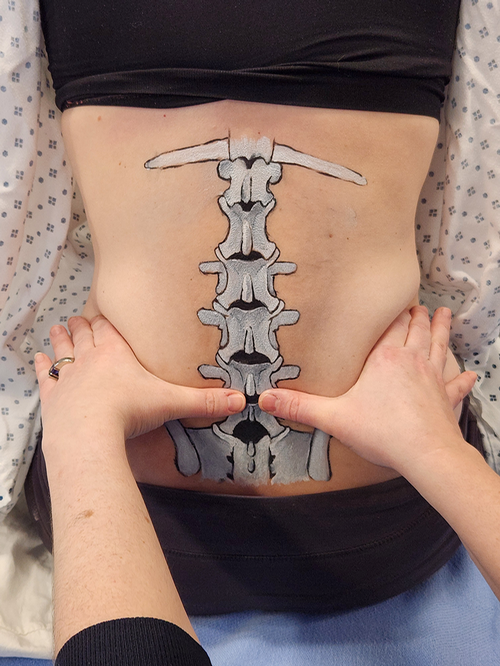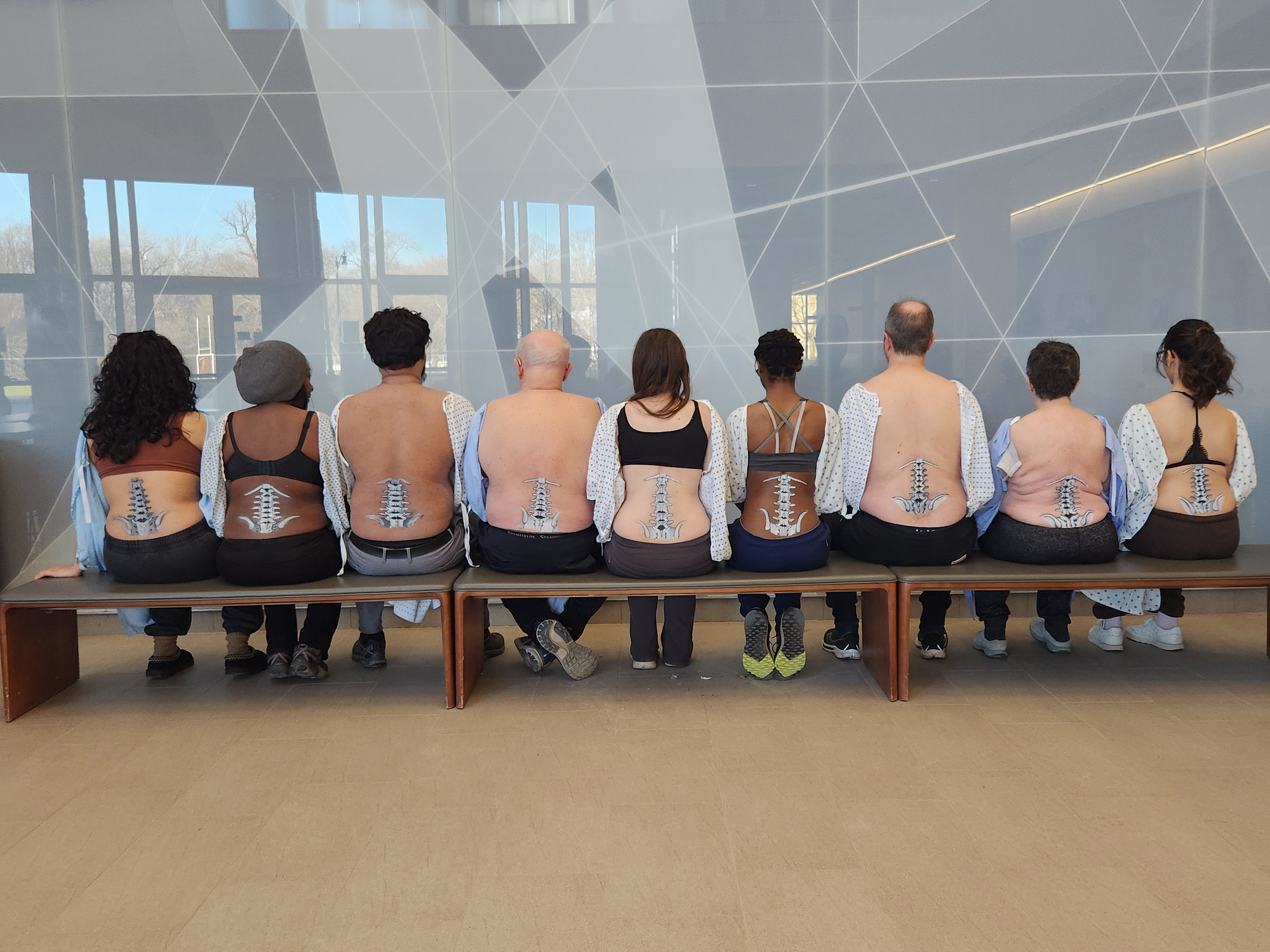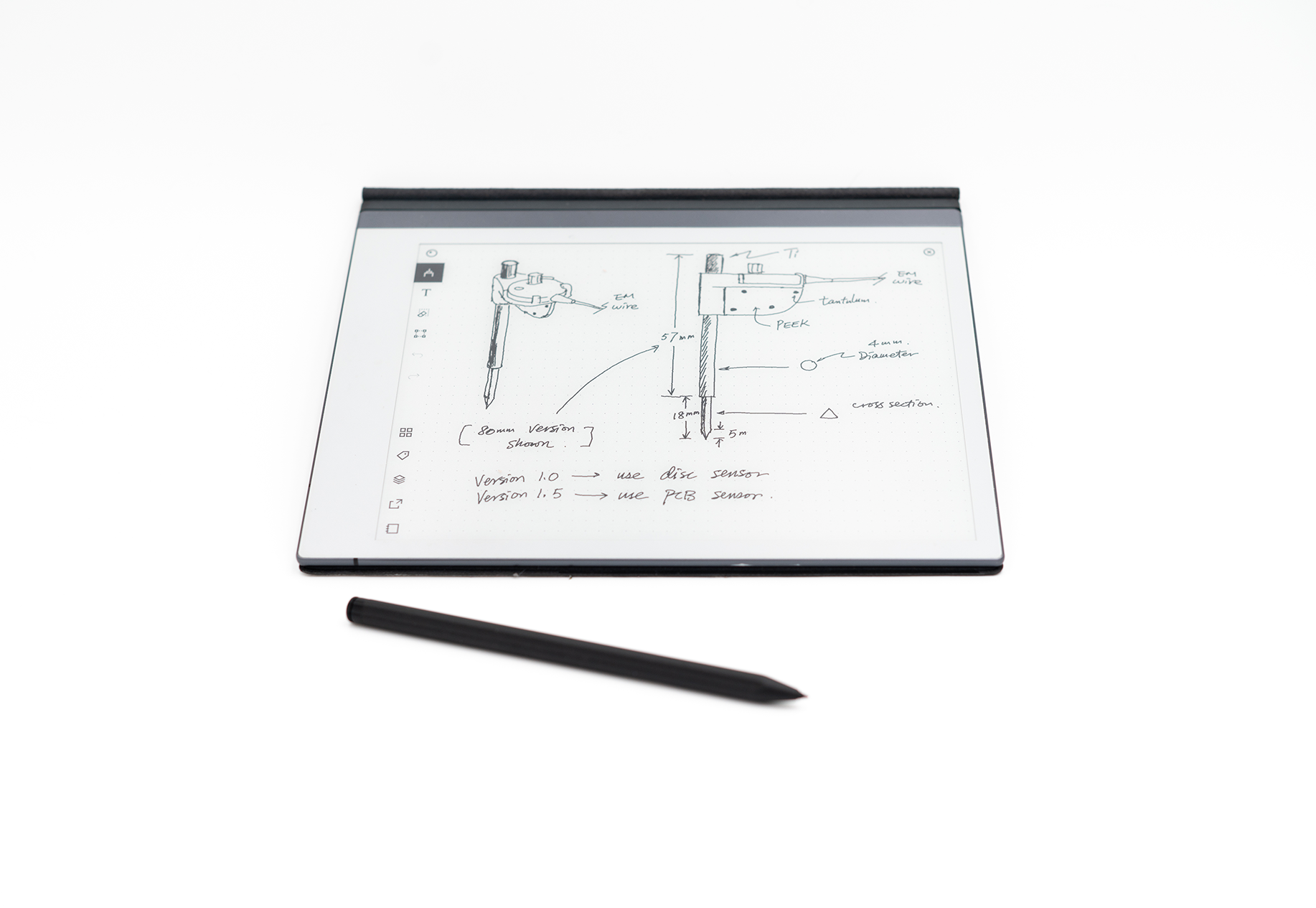 Painting the lower spine on actors of different sizes, skin types and ages helps learners visualize the anatomy across a wide range of real bodies.
Painting the lower spine on actors of different sizes, skin types and ages helps learners visualize the anatomy across a wide range of real bodies.
All images by Dani Dilkes from the Health Education Media Library are used under a CC BY-NC 4.0 License.
Just say the words, “We’re going to put a needle in your spine,” and most patients would be very distressed.
That’s what a lumbar puncture is – a very fine needle inserted into the space between two vertebrae, to collect a sample of cerebrospinal fluid to help diagnose conditions like meningitis or multiple sclerosis.
Trouble is, most educational materials on the procedure only depict 70-kilogram white males as models so it can be difficult for budding doctors to know how to approach this procedure across diverse bodies.
“Our future physicians need to be comfortable working on diverse body types because that’s what they will see in their practices. This individualized approach will really help.” —Dr. Courtney Casserly
Dr. Courtney Casserly is an award-winning instructor in the Department of Clinical Neurological Sciences and an expert on conditions like multiple sclerosis. She teaches the procedure to MD learners at Schulich Medicine.
Along with Dani Dilkes, director of the Health Education Media Library at Western and University of Toronto medical illustration students, they’ve come up with a solution using écorché: Painting the lower spine on actors of different sizes, skin types and ages in order to visualize the anatomy across a wide range of real bodies. Charys Martin, BSc Honors’06, MSc’08, PhD’13, assistant professor of Anatomy and Cell Biology, helped the team with anatomical landmarking.
“For a patient, this procedure can be new and really frightening,” said Casserly. “And our future physicians need to be comfortable working on diverse body types because that’s what they will see in their practices. This individualized approach will really help.”













